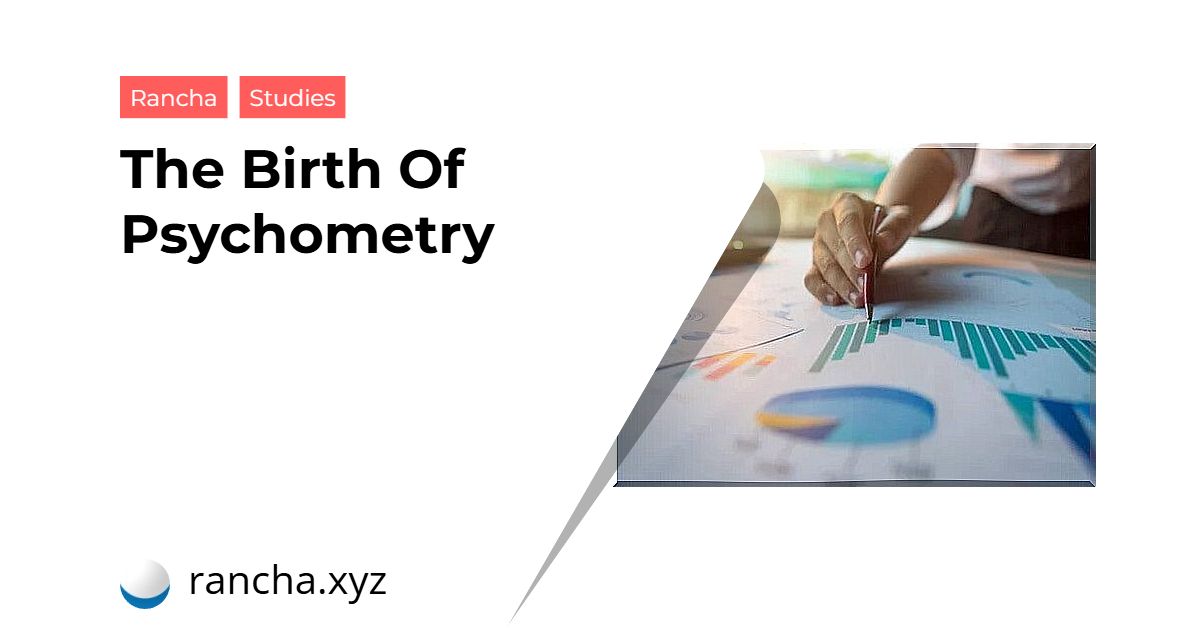Modern psychology uses current psychometry to explain some of its aspects, such as individual differences. However, do we know how this way of measuring the attributes of psychology came about?
Much of today’s psychometrics cannot be understood without paying attention to the background and historical origins of psychological testing and intelligence measurement (1). However, the first tests date back much earlier than you probably think.
Around 2200 BC, an emperor in China ordered that his government officials be scrutinized every three years to determine if they were suitable for their positions. As a result, these tests continued to be carried out, being improved over time. However, only in the Han Dynasty (200 AD) these procedures were validated.

The beginning of psychometry: experimental psychology
Experimental psychology began to flourish in the late nineteenth century in continental Europe and Great Britain. It was at this time that psychology began to distance itself from the subjectivism and introspection that had been followed up until now. Thus, human capabilities begin to be tested in laboratories and researchers begin to use objective procedures.
But who drove these changes? Most were well-known psychologists such as Wundt, Galton, Cattell, and Wissler. They showed that it was possible to expose the mind to scientific measurement. It was at this point that the birth of psychometry began to be seen.
Wundt’s contributions
Willhelm Wundt (1832 – 1920) was a physiologist, psychologist and philosopher who founded what became known as the first psychological laboratory. This happened in 1879 in Leipzig, Germany.
Wundt’s experiment was carried out with a kind of thought meter. This instrument was a calibrated pendulum with needles protruding from each side. The pendulum swung from side to side, striking the bells with its needles. Thus, the observer’s task was to note the position of the pendulum when the bells rang (1).
Wundt considered that the difference between the observed pendulum position and the actual position could provide a means of determining the observer’s speed of thought. Though rudimentary, Wundt measured mental processes and thus recognized individual differences (1).
This is why it is important to highlight the study of individual differences and the influence of early research on intelligence as precursors to psychometrics.
The importance of tests
Psychological tests are also of great importance in the beginning of psychometry. They are used for psychological guidance, selection and assignment purposes.
Almost as soon as they enter the school system, many students go through what we might call “psychological tests”. The results of these tests can change a person’s future: for example, a test for depression may or may not lead to a diagnosis of this disorder.
The consolidation of psychometry
It seems clear that the consolidation of psychometrics is reflected in the beginning of the psychological assessment market. In 1895 the American Psychological Association (APA) formed a committee specializing in the new technology of measuring instruments. In 1899, the president of the APA requested that psychologists prepare tests. These tests should have certain characteristics.
In turn , psychologist Cattell founded the Psychological Corporation in 1922 for the industrial production of tests. In 1947, the Educational Testing Service (ETS) was also founded , responsible for producing standardized performance tests and academic aptitude tests.

Some journals on psychometry
In 1901, Weldon, Galton and Pearson founded the journal Biometrika, which publishes works related to biology and psychology. Thorndike founded the journal Psychometrika in 1936, a great reference since its inception. Since then, the emergence of journals related to psychological measurement continues (1). These are a few:
- Educational and Psychological Measurement.
- British Journal of Statistical Psychology.
- Journal of Mathematical Psychology.
- Journal of Educational Measurement.
- Multivariate Behavioral Research.
- Applied Psychological Measurement.
- Applied Measurement in Education.
Thus, the term “psychometry” is currently the most widespread and generalized to refer to psychological measurement. It is the discipline that measures psychology and can be defined as “the set of methods, techniques and theories involved in the measurement of psychological variables” (2). In short, we can say that it is science that measures the “psychological” aspects of a person, such as knowledge, skills or personality.
 rancha.xyz Be free to choose their own route to self-knowledge, health and balance of body and soul.
rancha.xyz Be free to choose their own route to self-knowledge, health and balance of body and soul.




